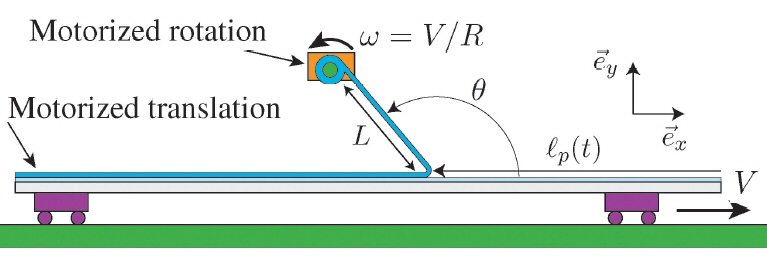MJ Dalbe,R Villey, M Ciccotti, S Santucci, PP Cortet anc L Vanel, 2016.
Inertial and stick-slip regimes of unstable adhesive tape peeling, Soft Matter, 12, 4537-48.

We present an experimental characterization of the detachment front unstable dynamics observed during the peeling of pressure sensitive adhesives. We use an experimental set-up specifically designed to control the peeling angle and the peeled tape length, while peeling an adhesive tape from a flat substrate at a constant driving velocity. High-speed imaging allows us to report the evolution of the period and amplitude of the front oscillations, as well as the relative durations of their fast and slow phases, as a function of the control parameters. Our study shows that, as the driving velocity or the peeling angle increases, the oscillations of the peeling front progressively evolve from genuine ‘‘stick-slip’’ oscillations, made of alternating long stick phases and very brief slip phases, to sinusoidal oscillations of amplitude twice the peeling velocity. We propose a model which, taking into account the peeling angle-dependent kinetic energy cost to accelerate and decelerate the peeled tape, explains the transition from the ‘‘stick-slip’’ to the ‘‘inertial’’ regime of the dynamical instability. Using independent direct measurements of the effective fracture energy of the adhesive-substrate joint, we show that our model quantitatively accounts for the two regimes of the unstable dynamics.


